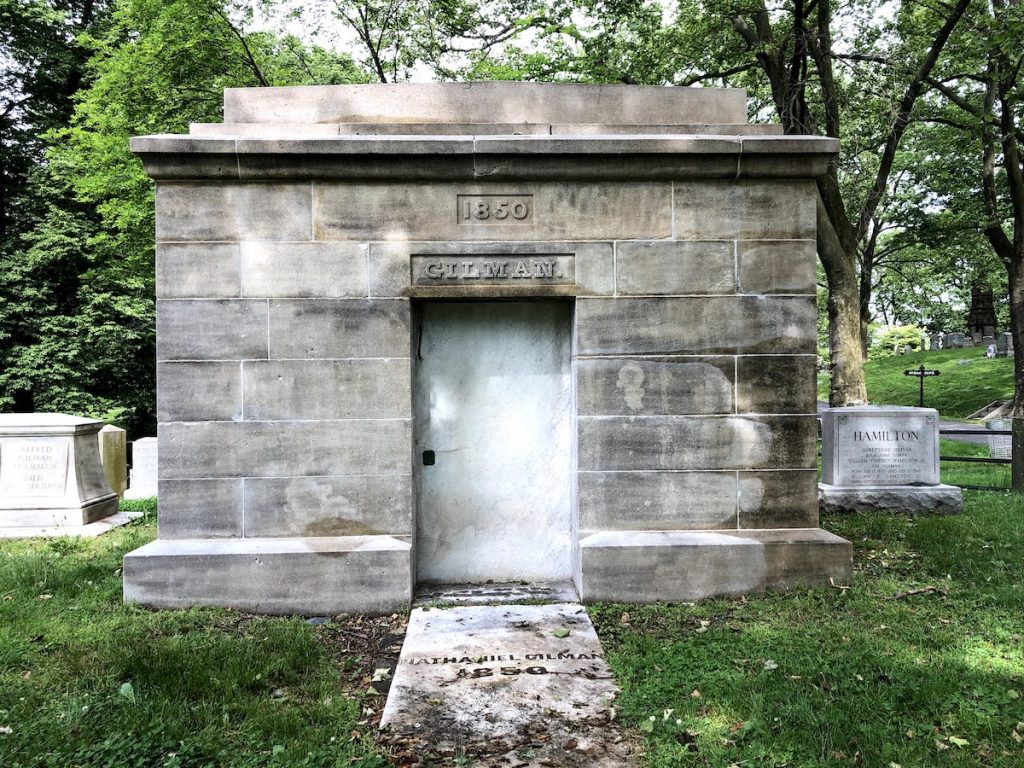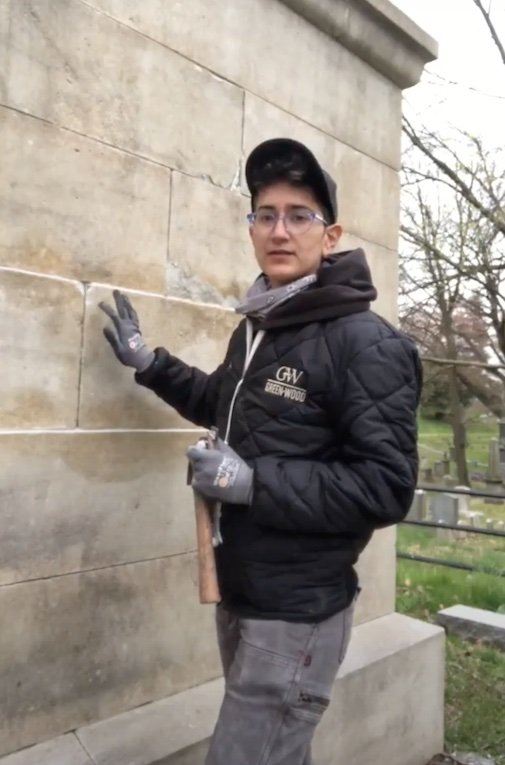Restoration at Green-Wood
The Gilman Mausoleum
By Neela Wickremesinghe The Robert A. and Elizabeth Rohn Jeffe Director of Restoration and Preservation


For me, buildings have always served as a mnemonic device. I can look at a structure and remember where I was when I first recognized it, or had the privilege to restore some aspect of it. I remember the buildings that I observed from the bus window on my way to school, the bus giving me the height to notice the glazed terra cotta accents on apartment buildings and the carved limestone pediments on libraries and post offices.
At Green-Wood, this experience continues. I remember the sculptures I have worked on over the years—ones I worked on with exuberant students, ones worked on when I, or someone on my crew, was having a bad day.
When faced with what to work on during the coronavirus lockdown I knew that whatever it was going to be, I would not forget it. My decision to restore the Gilman Mausoleum, a structure built in 1850 of Tuckahoe marble in a simple neoclassical form, was easy. As I cut out the failing joints and began repointing, I went many days without seeing a visitor. I carefully worked my way around the mausoleum, and slowly, they began to return, smiling at me behind their masks.
This May, in celebration of Historic Preservation Month, I documented my work on Green-Wood’s social media channels (Facebook and Instagram @historicgreenwood) to share the process with a wider audience.
The Cemetery has been a safe haven for many during this time, myself included. To have time and space to hone my craft amidst such uncertainty was a gift. Gilman now holds not only the memories of its namesake, but mine as well. Memories of loved ones I lost during this time are now embedded in its walls and mixed in with the mortar.
Green-Wood has long been a place of remembrance for those with loved ones interred within its gates. As we begin to reflect on this time, it is clear that Green-Wood will remain so—for all of us, for years to come.